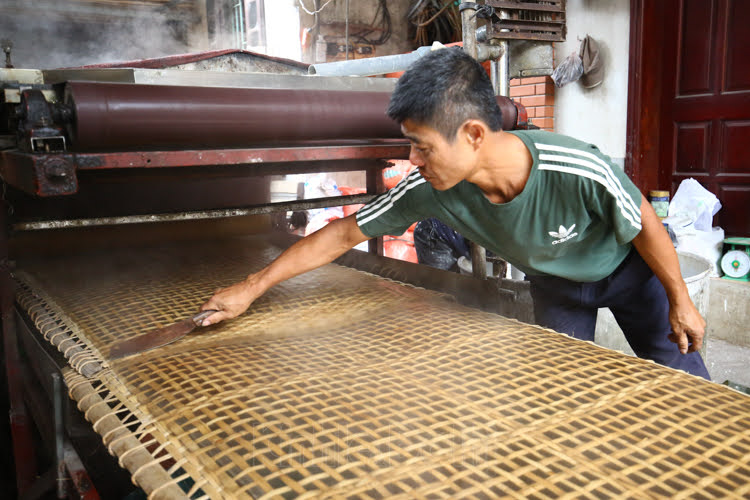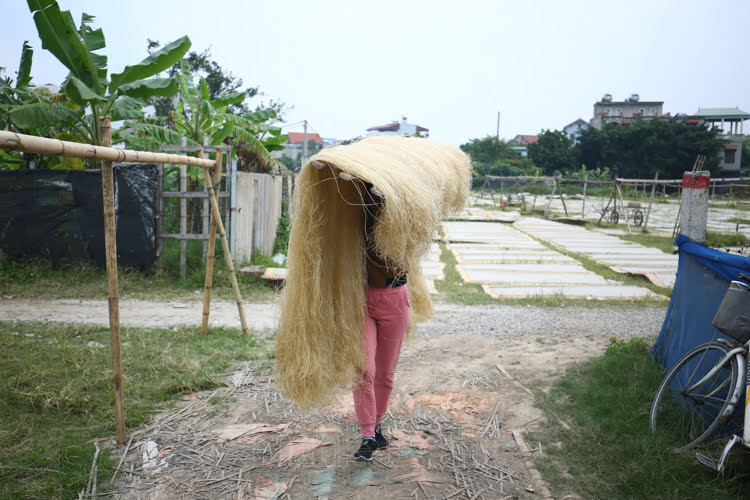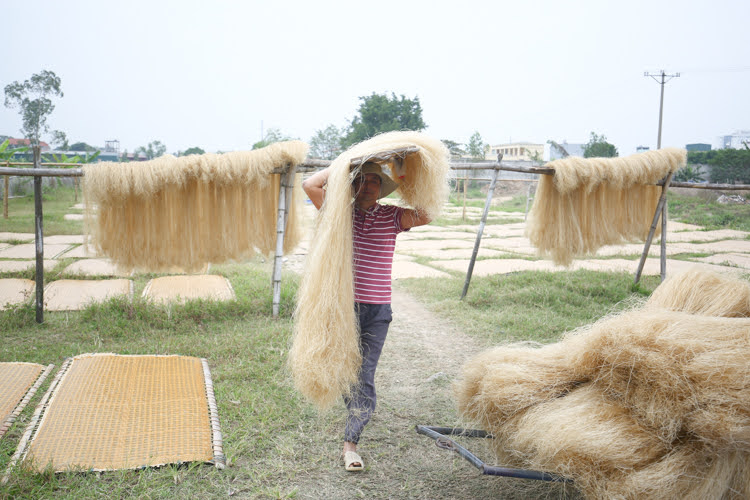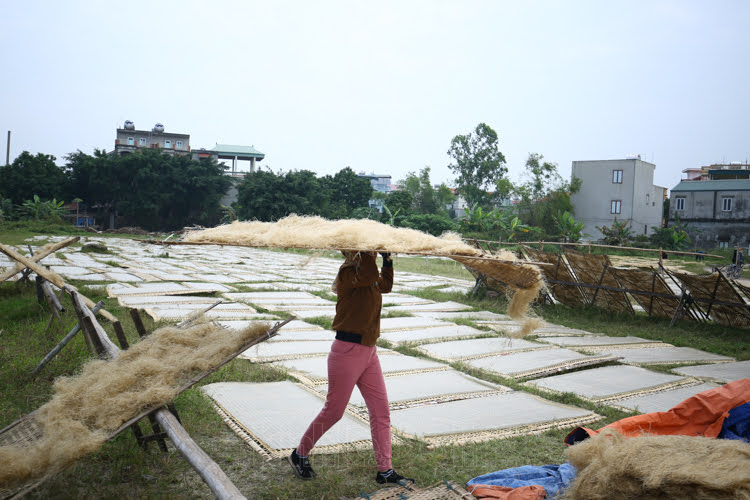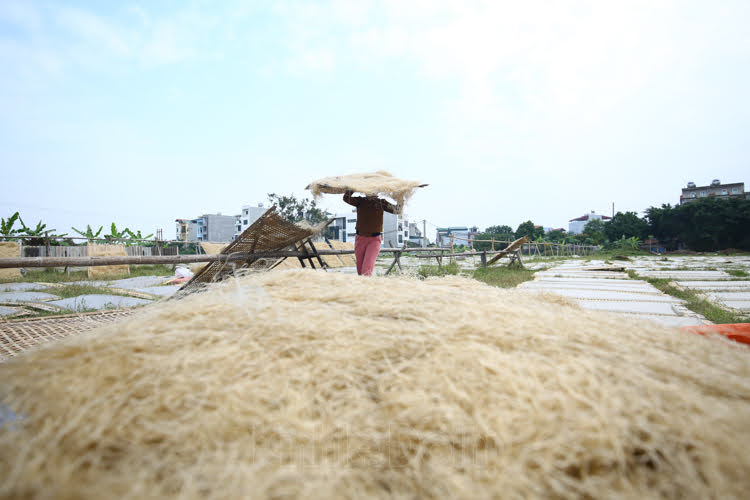Centuries-long Cu Da vermicelli village, one of four traditional artisan places in Hanoi, is distinctive of Vietnamese culture and gains international fame.
|
Some 13 kilometers to the south of Hanoi’s downtown, Cu Da vermicelli village is famous not only for being home to ancient French-style two-story houses, but also for a long tradition of making vermicelli. |
|
Vermicelli noodles or “Mien” in Vietnamese, which comes in white and yellow versions, can be seen in the noodle soup or in spring rolls, the popular dishes in Vietnam. |
|
Vermicelli making is a time-honored tradition practiced by generations of villagers. |
|
The busiest time of the year in the village is during October in the lead-up to Lunar New Year. |
|
The main ingredient of Cu Da vermicelli is cassava starch. |
|
Both the white and yellow versions of vermicelli are made with arrowroot which is ground and mixed with water to make a paste, then it is spread onto large bamboo trays to dry. |
|
Grinding arrowroot to make powder, pasta makers produce hundreds of tons of vermicelli each year to meet the national demand. |
|
It will be cut into thin strips (called vermicelli) and dried again before packaging. |
|
Although the production process has been modernized, vermicelli in Cu Da village still keeps its quality. |
|
The high-quality noodles has attracted a large number of customers across the nation, and vermicelli has soon become the village’s calling card. |
|
In Cu Da, white and yellow vermicelli noodles dangle everywhere, covering rooftops and walls -pretty much any surface that noodles can be hung from. |
|
With years of experience, the village has gone through many changes and development. Nowadays, producers use bigger buckets and barrels for higher productivity. |
|
They also use automated machines that transmit heat instead of using direct fire like they used to. |
|
Despite a few adjustments, the process is still labor-intensive. |
|
First, pasta makers grind arrowroot into a flour, then mix it with water to create a paste. The paste is then smeared into a thin pancake on a bamboo tray, steamed, then dried in the sun. |
|
Once dry, the paste is then cut into thin noodles and dried again. It’s then packaged and distributed across Vietnam. |
|
Vermicelli is an indispensable dish for many Vietnamese people on significant occasions. |
Together with the antique houses, Cu Da villagers always pay attention to keeping the traditions of making vermicelli:



















